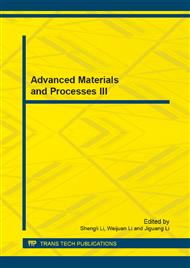p.411
p.415
p.419
p.423
p.429
p.433
p.439
p.443
p.447
Study of the Parameters of Lightweight Polymer-Cement Repair Mortars Exposed to High Temperatures
Abstract:
The article examines the research aimed at studying the basic physico-mechanical parameters of polymer-cement repair mortars with a modified composition. The objective of a composition modification was to achieve the parameters characteristic of fire-resistant repair mortars. For research purposes, a lightweight sintered aggregate-based ash body was used along with polymer fibres based on polyolefin. It was suggested to use a few recipes that have been subjected to high temperature stress up to 1200 °C. Subsequently the suitability of the formula composition was verified by determining the essential characteristics visual assessment of the structure, density, compressive strength and flexural strength. The results point to the suitability of the proposed formulas, although this will be verified by setting other essential material characteristics.
Info:
Periodical:
Pages:
429-432
Citation:
Online since:
September 2013
Authors:
Keywords:
Price:
Сopyright:
© 2013 Trans Tech Publications Ltd. All Rights Reserved
Share:
Citation:


